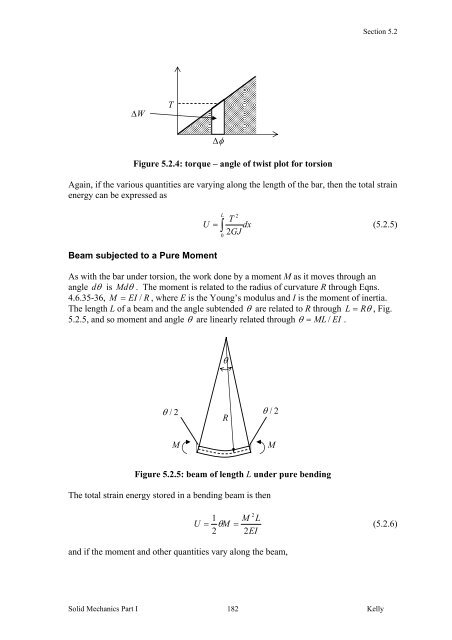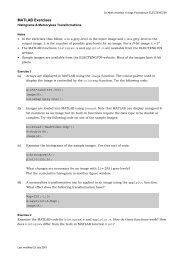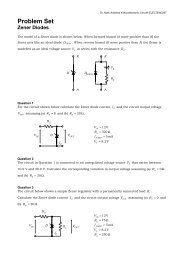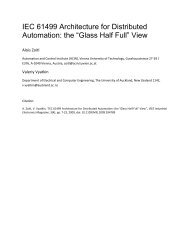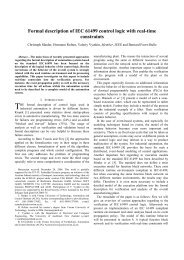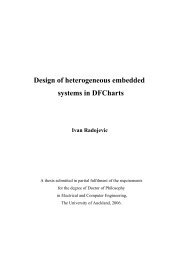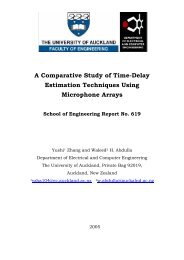5.2 Elastic Strain Energy
5.2 Elastic Strain Energy
5.2 Elastic Strain Energy
You also want an ePaper? Increase the reach of your titles
YUMPU automatically turns print PDFs into web optimized ePapers that Google loves.
ΔW<br />
Figure <strong>5.2</strong>.4: torque – angle of twist plot for torsion<br />
Section <strong>5.2</strong><br />
Again, if the various quantities are varying along the length of the bar, then the total strain<br />
energy can be expressed as<br />
Beam subjected to a Pure Moment<br />
T<br />
U<br />
=<br />
L<br />
∫<br />
0<br />
2<br />
T<br />
dx<br />
2GJ<br />
Solid Mechanics Part I 182<br />
Kelly<br />
(<strong>5.2</strong>.5)<br />
As with the bar under torsion, the work done by a moment M as it moves through an<br />
angle d θ is Md θ . The moment is related to the radius of curvature R through Eqns.<br />
4.6.35-36, M = EI / R , where E is the Young’s modulus and I is the moment of inertia.<br />
The length L of a beam and the angle subtended θ are related to R through L = Rθ<br />
, Fig.<br />
<strong>5.2</strong>.5, and so moment and angle θ are linearly related through θ = ML / EI .<br />
θ / 2<br />
Δφ<br />
Figure <strong>5.2</strong>.5: beam of length L under pure bending<br />
The total strain energy stored in a bending beam is then<br />
and if the moment and other quantities vary along the beam,<br />
θ<br />
R<br />
θ / 2<br />
M M<br />
2<br />
1 M L<br />
U = θ M =<br />
(<strong>5.2</strong>.6)<br />
2 2EI


